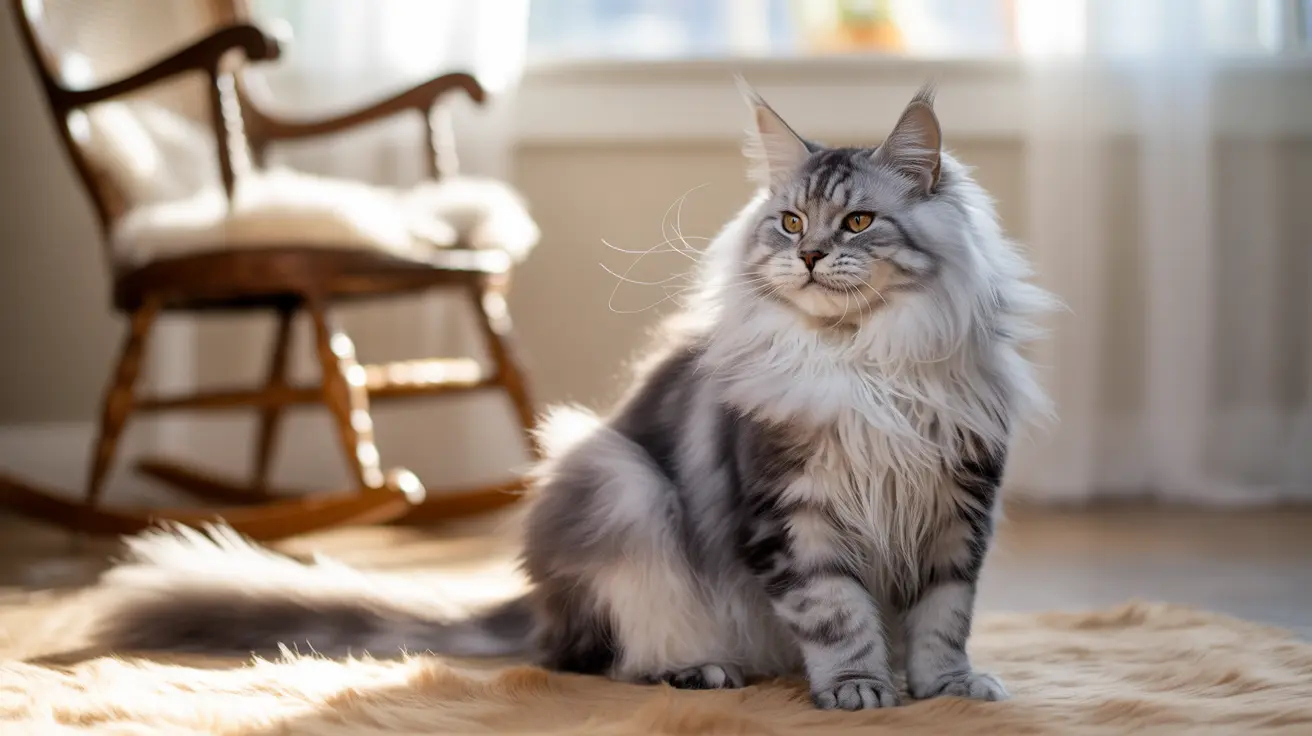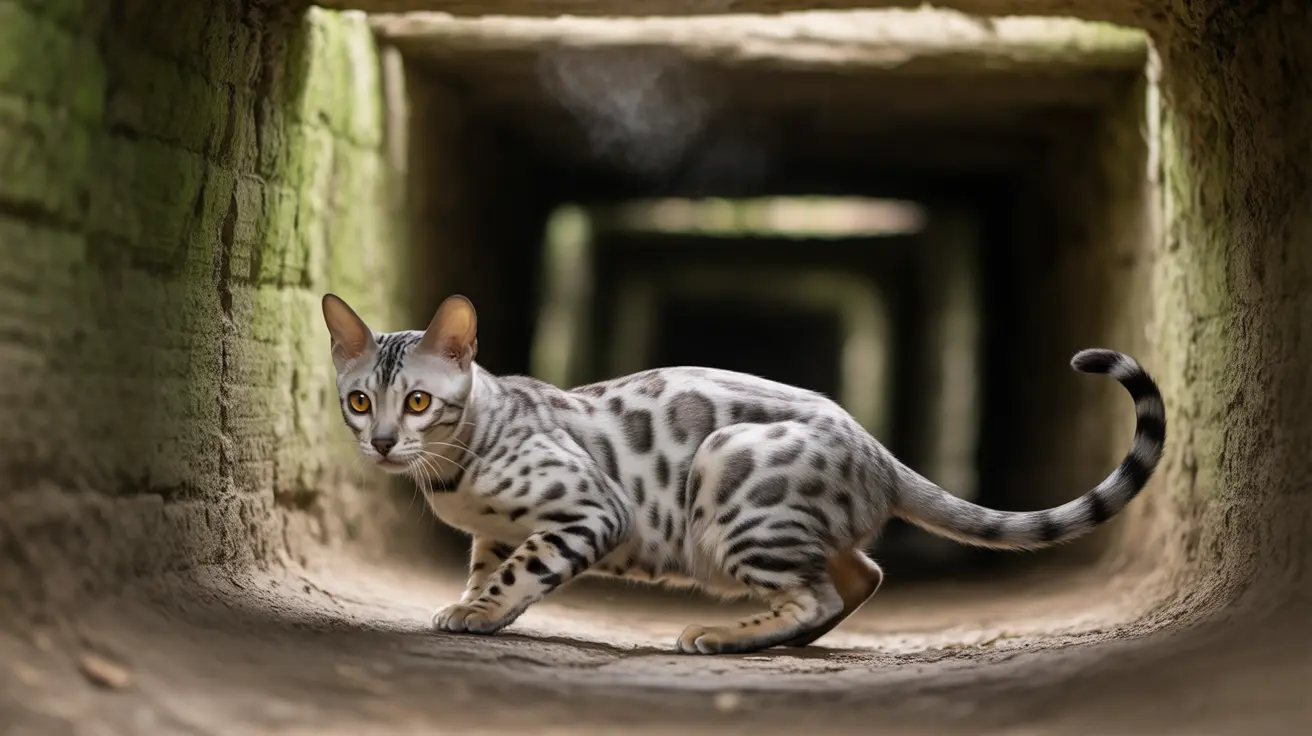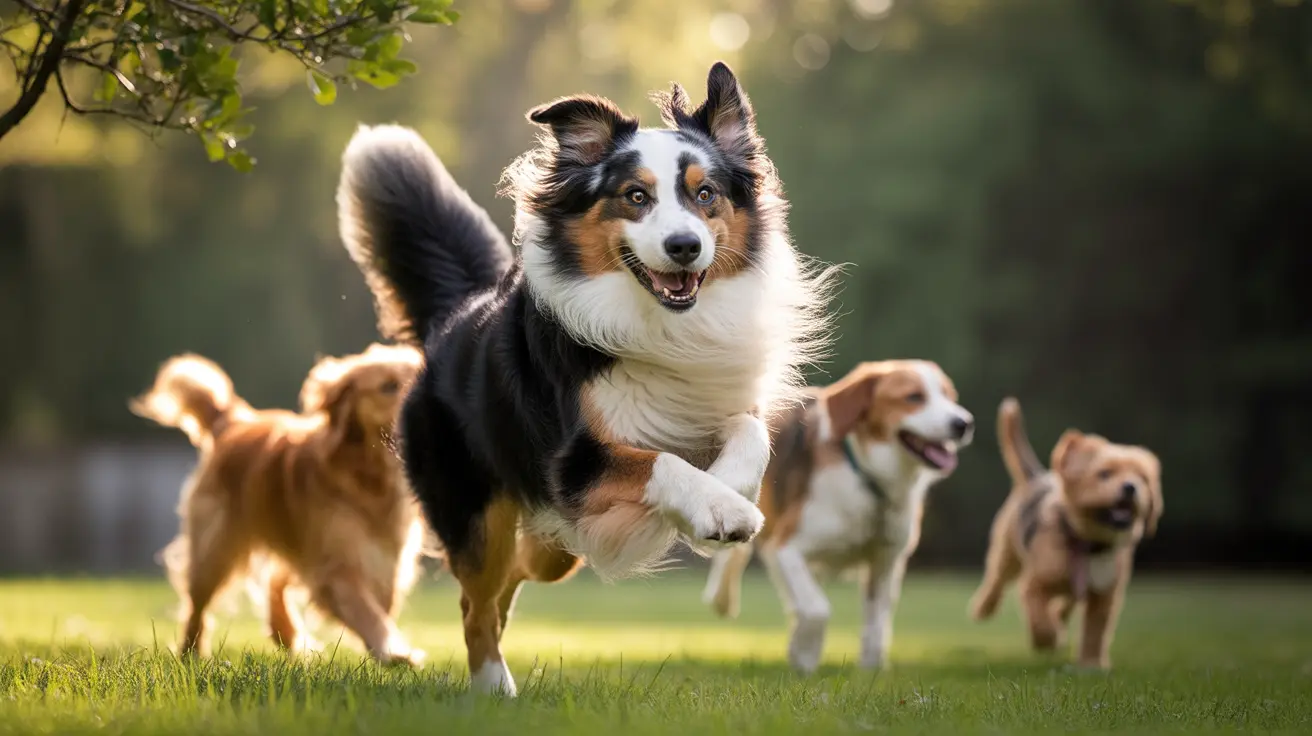Essential Semi-Longhaired Cat Grooming Tips for Healthy Coats and Happy Cats
Semi-longhaired cats, including beloved breeds like the Sacred Birman, Turkish Angora, and Maine Coon, possess stunning coats that strike the perfect balance between beauty and manageability. While these magnificent felines don't require the intensive daily grooming that their longhaired cousins demand, they still need regular care to maintain their lustrous appearance and overall health. Understanding proper grooming techniques for semi-longhaired cats is essential for preventing matting, reducing hairballs, and ensuring your feline companion remains comfortable and beautiful.
Many cat owners underestimate the specific needs of semi-longhaired breeds, assuming they can get by with minimal grooming like shorthaired cats. However, neglecting proper care can lead to painful matting, skin issues, and excessive shedding throughout your home. The good news is that with the right approach, tools, and techniques, maintaining your semi-longhaired cat's coat can become an enjoyable bonding experience that benefits both you and your pet.
This comprehensive guide will walk you through everything you need to know about semi-longhaired cat grooming, from establishing the perfect routine to addressing common coat problems and creating positive grooming experiences for even the most resistant cats.
Understanding Semi-Longhaired Cat Coat Requirements
Semi-longhaired cats typically require grooming 2-3 times per week, falling between the weekly needs of shorthaired cats and the daily requirements of longhaired breeds. Their medium-length coats are prone to tangling and matting, especially in areas where friction occurs, such as under the arms, behind the ears, and along the back legs.
The grooming frequency for your semi-longhaired cat may vary based on several factors, including age, health status, and seasonal changes. Older cats or those with mobility issues may need more frequent grooming assistance, as they cannot reach all areas of their body effectively. During shedding seasons, typically spring and fall, you may need to increase grooming frequency to prevent excessive hair accumulation.
Regular grooming serves multiple purposes beyond coat maintenance. It helps remove loose and dead hair, prevents matting and hairballs, removes dirt and odors, allows monitoring of skin and coat health, and serves as an important bonding activity between you and your cat.
Essential Tools for Semi-Longhaired Cat Grooming
Selecting the right grooming tools is crucial for effective and comfortable grooming sessions. For semi-longhaired cats, you'll need a combination of tools to address different aspects of coat care.
A long-toothed metal comb with variable tooth lengths is essential for working through the medium-length fur and detecting any developing mats. Soft to medium wire brushes help distribute natural oils and remove loose fur, while natural hair brushes provide gentle massage and finishing touches. Slicker brushes can be useful for removing loose undercoat, but use them gently to avoid irritating the skin.
Consider investing in dematting tools for addressing minor tangles, grooming gloves for cats who prefer gentler handling, and hair conditioners or rosewater sprays to maintain coat softness and manageability. Always choose tools specifically designed for cats, as they're sized appropriately and gentler on feline skin.
Step-by-Step Grooming Routine
Establishing a consistent grooming routine helps your semi-longhaired cat become comfortable with the process and ensures no areas are overlooked. Begin each session by approaching your cat calmly and allowing them to sniff and investigate the grooming tools.
Start by gently stroking around the head and face areas where cats are most comfortable being touched. Gradually work your way to the shoulders and neck, using smooth, gentle motions with your brush or comb. Work in sections, brushing in the direction of hair growth to avoid pulling and causing discomfort.
Pay special attention to areas prone to matting, including behind the ears, under the chin, the chest area, under the arms, and along the back legs. Use your metal comb to gently work through any small tangles, holding the fur close to the skin to minimize pulling. For the body, use long, sweeping strokes with your brush, followed by combing to ensure you've reached the undercoat.
Keep grooming sessions short, ideally 10-15 minutes, to prevent your cat from becoming stressed or overwhelmed. End each session on a positive note with praise, treats, or playtime to create positive associations with grooming.
Addressing Common Coat Problems
Semi-longhaired cats can experience specific coat issues that require targeted attention. Matted fur is one of the most common problems and should be addressed immediately to prevent skin irritation and discomfort. Small mats can often be gently teased apart using your fingers or a dematting tool, but never pull or yank on matted areas.
For mats that cannot be easily removed, hold the fur close to the skin and work gradually with a dematting comb. If mats are severe or located close to the skin, professional grooming assistance is recommended to avoid injuring your cat.
Some semi-longhaired cats may develop "fettschwanz" or greasy tail, particularly intact males. This condition requires prompt attention using non-re-fattening shampoos specifically designed for cats. Mild cases in early stages may respond to gentle home remedies, but persistent greasiness should be addressed by a veterinarian.
Bathing Guidelines for Semi-Longhaired Cats
Most semi-longhaired cats do not require regular bathing, as they are excellent self-groomers and bathing can disrupt their natural skin oils. However, bathing may be necessary for show cats, cats with skin conditions, or those who have gotten into something sticky or toxic.
When bathing is necessary, use only cat-specific shampoos with the appropriate pH level. Human shampoos can irritate feline skin and should never be used. Prepare lukewarm water and ensure your cat has non-slip footing in the tub or sink. Use diluted shampoo and avoid getting water or soap in your cat's face, ears, or eyes.
Rinse thoroughly to remove all shampoo residue, as leftover soap can cause skin irritation. Towel dry gently and consider using a blow dryer on the cool setting if your cat tolerates it. Professional grooming services are recommended if your cat becomes extremely stressed during bathing.
Managing Seasonal Grooming Changes
Semi-longhaired cats experience seasonal coat changes that affect their grooming needs. During spring and fall shedding seasons, you may need to increase grooming frequency to 4-5 times per week to manage the increased hair loss and prevent excessive hairball formation.
Indoor heating during winter can dry out your cat's skin and coat, requiring additional attention to hydration and possibly the use of humidifiers. Ensure your cat has access to fresh water and consider adding omega-3 supplements to support healthy skin and coat condition.
Summer grooming may require special attention to preventing overheating, especially for cats with dense undercoats. Regular brushing helps remove excess fur and improves air circulation through the coat.
Preventing and Managing Hairballs
Semi-longhaired cats are prone to hairball formation due to the amount of fur they ingest during self-grooming. Regular brushing significantly reduces the amount of loose hair available for ingestion, thereby minimizing hairball size and frequency.
Hairballs form when cats swallow loose hair during grooming, and while occasional hairballs are normal, frequent vomiting should prompt a veterinary consultation. In addition to regular grooming, ensure your cat has access to fresh water and consider hairball prevention foods or supplements if recommended by your veterinarian.
Introducing Grooming to Resistant Cats
Some adult cats may resist grooming, especially if they weren't accustomed to it as kittens. Start slowly with very short sessions, focusing on areas your cat enjoys being petted. Use treats and positive reinforcement to create pleasant associations with grooming tools.
Watch for signs of stress during grooming, including tail swishing, ear flicking, growling, hissing, yowling, scratching, or biting. If you observe these behaviors, stop the grooming session immediately and try again later with more patience and gradual introduction.
For extremely resistant cats, consider using grooming gloves initially, as they feel more like petting. Gradually introduce other tools once your cat becomes comfortable with the grooming routine.
Nail Care and Additional Grooming Tasks
Regular nail trimming is important for semi-longhaired cats, especially indoor cats who don't naturally wear down their claws. Trim nails approximately every 12 weeks, cutting only the sharp tip while avoiding the pink quick inside the nail.
Check your cat's ears regularly for wax buildup or signs of infection. Clean only the outer ear with a damp cloth or cat-specific ear cleaner, never inserting anything into the ear canal. Monitor skin condition during grooming sessions, looking for any changes, irritation, or parasites.
Professional Grooming Considerations
While many semi-longhaired cats can be maintained with home grooming, professional services may be beneficial 2-4 times per year, particularly for cats with dense coats or those whose owners struggle with home maintenance. Professional groomers can provide thorough baths, nail trims, and expert dematting services.
Professional grooming is especially recommended if severe matting occurs, if your cat requires sedation for grooming procedures, or if you need guidance on proper techniques and tool selection.
Frequently Asked Questions
- How often should I groom my semi-longhaired cat? Semi-longhaired cats typically require grooming 2-3 times per week, more frequently than shorthaired cats but less than longhaired breeds. During shedding seasons, you may need to increase this to 4-5 times per week.
- What's the best brush for semi-longhaired cats? A combination of tools works best: long-toothed metal combs for detangling, soft to medium wire brushes for removing loose fur, and natural hair brushes for finishing and massage. The specific tools may vary based on your cat's individual coat density and texture.
- Do semi-longhaired cats need regular baths? Most semi-longhaired cats do not need regular baths, as they are excellent self-groomers. Bathing should only be done when necessary, such as for show purposes, skin conditions, or when the cat gets into something messy or toxic.
- How can I prevent my semi-longhaired cat from developing mats? Regular brushing 2-3 times per week, paying special attention to friction-prone areas like under the arms, behind the ears, and along the back legs. Address small tangles immediately before they develop into mats.
- What should I do if my cat develops severe mats? Never try to pull or cut mats yourself, as this can injure your cat. For severe matting, consult a professional groomer who can safely remove mats, possibly requiring shaving in extreme cases.
- How do I know if my semi-longhaired cat has a skin problem? During grooming sessions, watch for redness, irritation, unusual odors, excessive scratching, bald patches, or changes in coat texture. Any concerning changes should be evaluated by a veterinarian.
- Can I use human grooming products on my semi-longhaired cat? No, always use products specifically designed for cats. Human shampoos and conditioners have different pH levels that can irritate feline skin and disrupt their natural protective oils.
Conclusion
Proper grooming is essential for maintaining the health, comfort, and beauty of semi-longhaired cats. By establishing a regular routine with appropriate tools and techniques, you can prevent common coat problems while strengthening the bond with your feline companion. Remember that patience and consistency are key to successful grooming, especially when working with cats who may initially resist the process.
Regular grooming not only keeps your semi-longhaired cat looking their best but also provides valuable opportunities to monitor their overall health and catch potential issues early. With the right approach, grooming can become an enjoyable experience that both you and your cat look forward to, contributing to their overall well-being and happiness.






